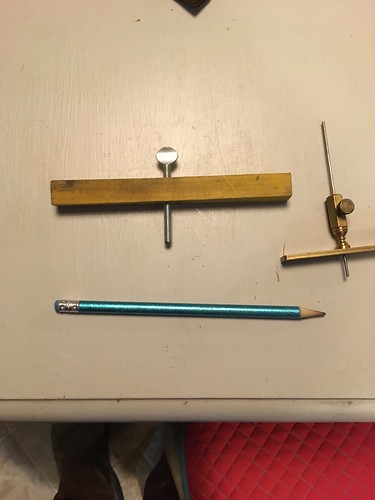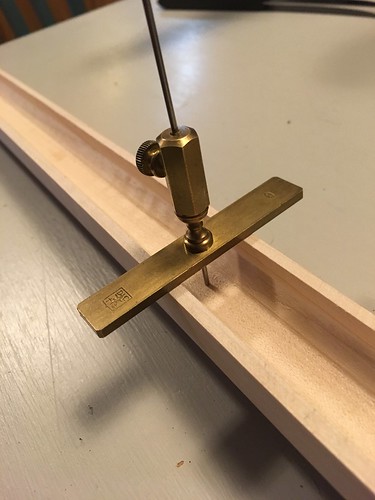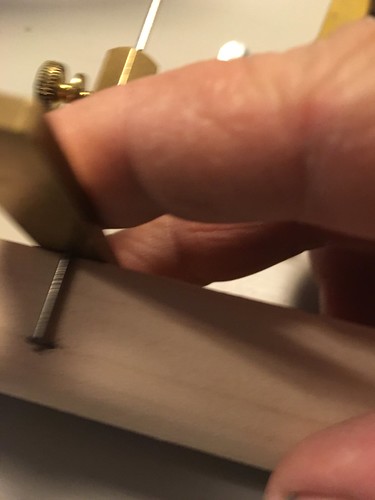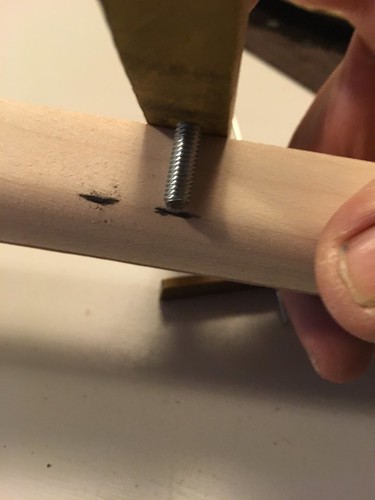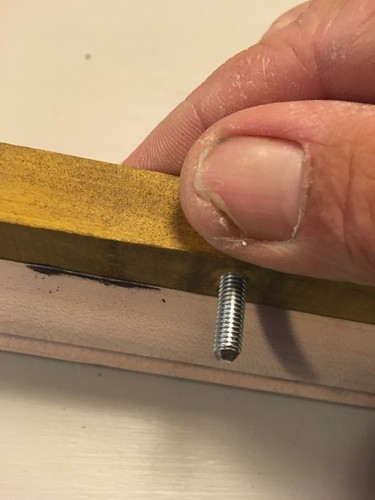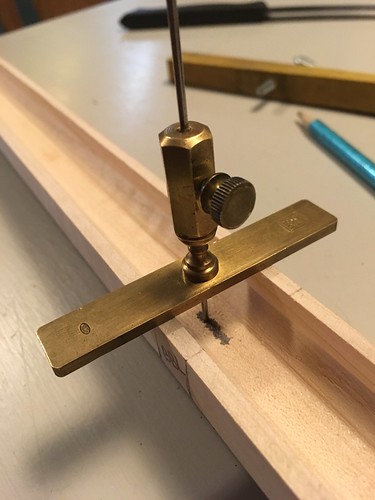Cpl. Ashencheeks
40 Cal.
- Joined
- Mar 31, 2014
- Messages
- 336
- Reaction score
- 15
I recently drilled holes in the staple lugs for a .45 caliber 42" 15/16" barrel.
I have been building this scratch made full stock matchlock rifle with almost only muscle powered hand tools over a long slow period of time but have been flying blind for much of this project with the exception of some pretty good advice from these forums.
So far I have already inlet the lock plate area and inlayed the barrel channel into the stock, drilled the ramrod channel, chiseled out the area where the lug staples rest under the barrel and tried to use a barrel tennon drill jig tool but it was so horribly off in measurement that it almost had me drilling through above the staple and into the barrel.
So my solution was to use a barrel pin then a drill bit of the same size as the barrel pin taped tightly to the end edge of a combination square then lightly hammered to make a mark on the stock where to drill in relation to the hole in the staple lug and the top of the barrel.
This worked but not without having the barrel sit a tiny bit too high above the barrel channel, so now the barrel has a very slight rocker play to it. I need to lower the barrel by making the pin holes lie down deeper in the stock.
This would make the pins loose in the stock and I would need either use larger pins which risk weakening the staples, or maybe use strategically placed escutcheons to wedge the pins more properly.
I have read somewhere that escutcheons are sometimes used to hide drilling mistakes in rifle stocks, well I think I am at that point now.
Any advice on how I could deal with this problem?
Thanks for reading this and thank you in advance for any advice or replies which you may care to offer in relation to this post.
I have been building this scratch made full stock matchlock rifle with almost only muscle powered hand tools over a long slow period of time but have been flying blind for much of this project with the exception of some pretty good advice from these forums.
So far I have already inlet the lock plate area and inlayed the barrel channel into the stock, drilled the ramrod channel, chiseled out the area where the lug staples rest under the barrel and tried to use a barrel tennon drill jig tool but it was so horribly off in measurement that it almost had me drilling through above the staple and into the barrel.
So my solution was to use a barrel pin then a drill bit of the same size as the barrel pin taped tightly to the end edge of a combination square then lightly hammered to make a mark on the stock where to drill in relation to the hole in the staple lug and the top of the barrel.
This worked but not without having the barrel sit a tiny bit too high above the barrel channel, so now the barrel has a very slight rocker play to it. I need to lower the barrel by making the pin holes lie down deeper in the stock.
This would make the pins loose in the stock and I would need either use larger pins which risk weakening the staples, or maybe use strategically placed escutcheons to wedge the pins more properly.
I have read somewhere that escutcheons are sometimes used to hide drilling mistakes in rifle stocks, well I think I am at that point now.
Any advice on how I could deal with this problem?
Thanks for reading this and thank you in advance for any advice or replies which you may care to offer in relation to this post.




